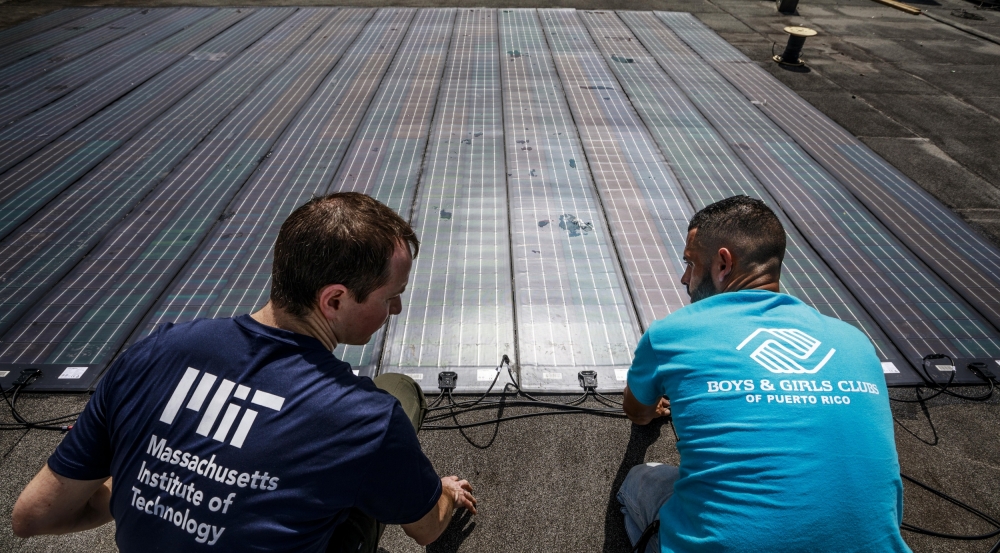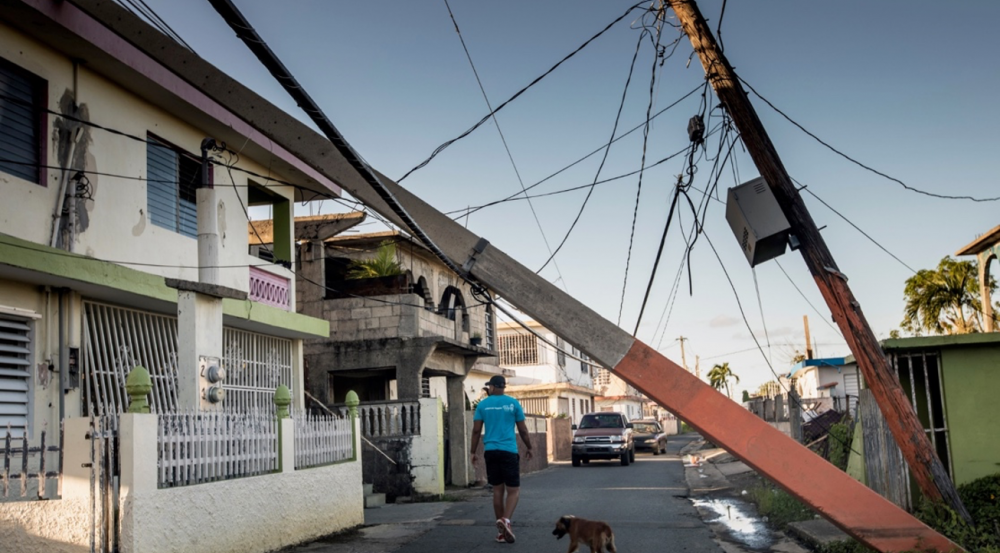Lincoln Laboratory proposes plans for restoring Puerto Rico’s power grid
In September 2017, hurricanes Irma and Maria swept through Puerto Rico, causing a near-complete power grid failure that affected the archipelago for many months. In light of the hardships that the collapse of the power grid caused for Puerto Rico’s residents, several organizations provided input on the best way to rebuild the grid. Lincoln Laboratory released a report based on analysis they performed to help the Puerto Rico and United States governments understand and compare the various proposals for recovery.

This research, sponsored by the Federal Emergency Management Agency, explored possible new architectures for providing electrical service in Puerto Rico at a reasonable cost during normal conditions and for as many end users as possible during extreme conditions when major equipment fails to function. Researchers found that with the use of new technologies, Puerto Rico’s electrical energy system could be modernized to be clean, reliable, and resilient at a much lower cost than previously estimated.
"Our report demonstrates that it is indeed possible to provide affordable electricity service to the Puerto Rican people without having widespread loss of power during natural disasters, like hurricanes and earthquakes," says Marija Ilic, a senior staff member in the Energy Systems Group and the project’s technical lead. "For this to happen, the grid operation needs to be modernized by minimally coordinating power and voltage at energy resources and electricity user locations, and also the voltage of controllable grid components."
Laboratory researchers found that Puerto Rico’s existing infrastructure could be improved when paired with new capabilities, such as alternate current optimal power flow (AC OPF)–enabled voltage and power dispatch, solar photovoltaics (PVs), and intelligent software. AC OPF is an algorithm that dispatches voltage and power in the most energy- and cost-efficient way and enables power flows to be re-channeled through the electrical grid so that electricity is delivered to critical loads first—i.e., the functions that must have a constant power supply, such as data servers or hospital equipment. The use of AC OPF could reduce energy costs and prevent cascading power blackouts such as those seen following hurricanes Irma and Maria.
The research also showed that Puerto Rico’s power system could be augmented with solar PVs, which use solar cells to convert energy from the sun into electricity. Such a measure, when combined with new grid-balancing controls that the team simulated, could save Puerto Rico’s ratepayers annual fuel costs from tens of millions of dollars (5 percent savings) to a billion dollars (60 percent savings) per year and maintain power service to 50 percent or more of the island’s population during extreme events. Laboratory researchers conducted simulations that showed modernized grid controls coordinating intelligent grid users, including those with their own microgrids, could continue serving 50 percent of Puerto Rico’s electrical needs in power enclaves, or portions of the grid that degrade and become electrically disconnected from the main grid.
Intelligent software could help grid operators make decisions during extreme situations through a technique known as corrective dispatch. Corrective dispatch software monitors the power demand and flows throughout the grid, computes the best power system adjustments, and guides operators in the implementation of real-time corrective actions. Instead of relying on their intuition, grid operators would receive guidance from modern optimization algorithms, such as AC OPF, that make better use of voltage and power dispatch than humans can. Information technology–enabled enhanced operations would allow system operations to continue even as system conditions degrade.

Thinking of the future, Laboratory staff hope to work with the people of Puerto Rico to implement sidecars in their utility control centers. Sidecars are nonintrusive, stand-alone computers that collect and process data on energy consumption, generated power, and the status of electrical equipment. The computers use AC OPF to compute control actions to be taken, and these actions are then compared with those of grid operators. The use of sidecars would be an important step toward learning about the challenges and opportunities in planning and operating the Puerto Rico electrical system. These sidecars could ultimately provide advisories to help guide system operators and planners in operating the grid more efficiently on normal days and in minimizing blackouts during unprecedented conditions.
"Implementing the recommendations of this report would help Puerto Rico tremendously," Ilic says. "Puerto Rico would be the first to implement such a solution for affordable, resilient, and reliable electricity services that naturally integrate many new resources (such as solar PVs and microgrids). The Laboratory’s model could be used for many other utilities, most of which do not have advisory tools for providing electrical services during major unplanned outages, and can also create high-tech jobs for graduates from local Puerto Rican universities."